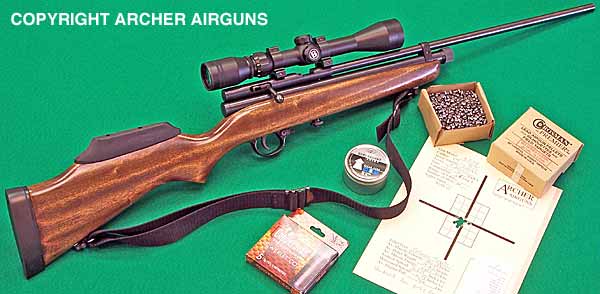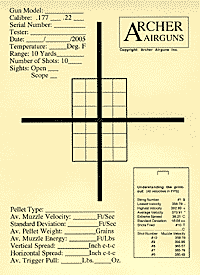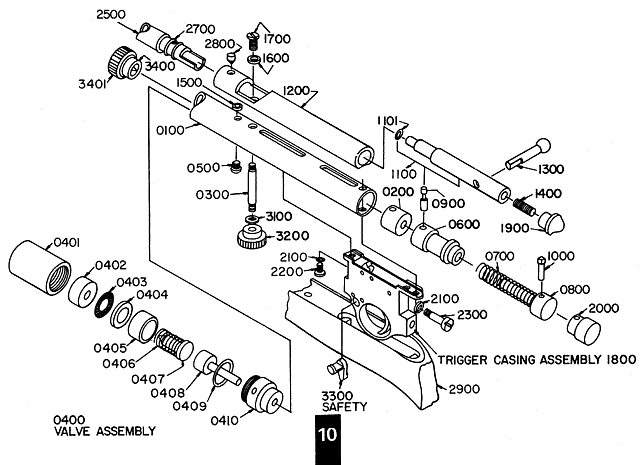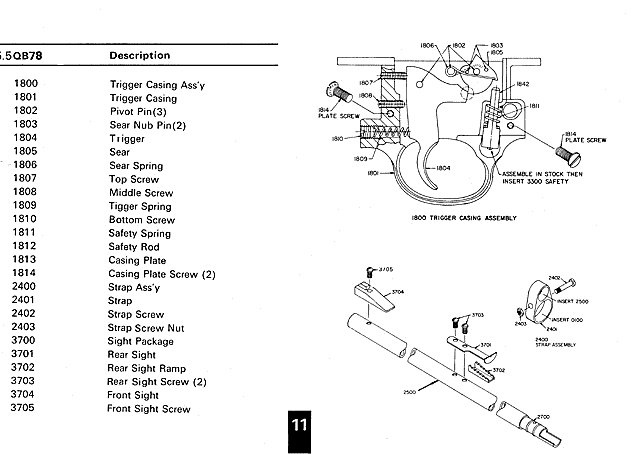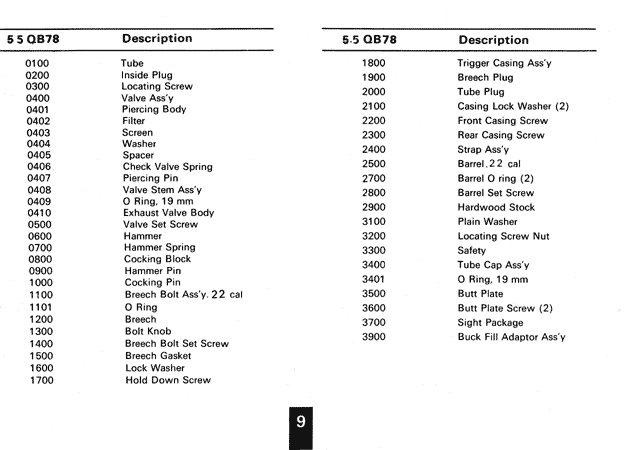 Shooting Consistency for QB78 Air Rifles This test was made indoors using Stephen Archer’s original .22 caliber QB78, which dates from 2002, has had many thousand pellets through its bore and has a relatively low muzzle velocity by QB78 standards. At the time of this test, it was in standard factory specification, not having been tuned in any way. Also, the tests were undertaken at a relatively low temperature for CO2 guns - 66 degrees Farenheit, firing wadcutter pellets. So, these results definitely represent the low end of performance which you can expect from your own QB78.
Summary This test shows some of the variation inherent in shooting one gun, due to different pellet weights, difference in time between shots, shooter capabilities etc. The variation is small but shows how - with CO2-powered airguns - there is no such thing as exact shot-to-shot reproducibility. This, of course, is part of their fascination! The test was undertaken as follows: The first graph shows the muzzle velocities of every shot:
As you can see, the muzzle velocity was reasonably consistent around 450fps for about the first 50 shots, after which it dropped rapidly. Some of the shot-to-shot variation would be caused by different elapsed times between shots, as I didn’t shoot to an exact frequency - particularly in Test 1. The velocities in Test 2 are fairly consistently below those in Test 1. This may be explained by the pellets coming from different tins of Crosman Target pellets. The average weight of the 70 pellets shot in Test 1 was 14.29 Grains, while those shot in Test 2 averaged 14.41 Grains. Note also that the first shot or two with fresh Powerlets run a little slow - this is a normal result which is shown by almost all the many QB78s tested by Archer Airguns. Now let’s look at another aspect of velocity, the Standard Deviation (or, the consistency between shots). Here the results are averaged for every 10 shots:
As you can see, the shot-to-shot consistency is very well controlled for the first 40 shots, but deteriorates somewhat between shots 41 to 50. After that the consistency falls to pieces as the gas is expended. The next graph shows the calculated average muzzle energy for groups of 10 pellets:
As you would expect, the muzzle energy is fairly consistent until around shot 50 at somewhat above 6 footpounds (as I said, this is a low-powered QB78 shooting in cool conditions), but then drops away rapidly from that point. For the final graph, we look at accuracy. This graph shows the center-to-centre group size for each group of 10 shots, expressed by adding together the vertical c-t-c and horizontal c-t-c measurements. Surprisingly, accuracy hold up well until shot 60 with c-t-c figures between 0.5-in and 0.75-in for groups of 10 shots before falling muzzle velocity turns the QB78 into a “mortar” and each shot drops lower down the target! This effect is most noticeable with the heavier pellets in Test 2.
Archer Airguns Test Target This target was designed by Archer Airguns specifically for testing airguns. The inspiration behind its appearance is the test target used by the Brno Arms Factory, Czechoslovakia in the 1930s, although this has been heavily-modified to include results of all the detailed testing undertaken by Archer Airguns. This target is printed on 67-lb card stock to ensure clean pellet holes and minimise tearing.
These are the parts lists and diagrams as published in the QB78 Owner’s Manual which is supplied with each gun. They are reproduced here with permission of Shanghai Air Gun Factory.
|
